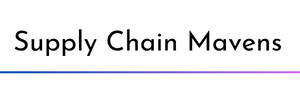iStock illustration by Wanlee Prachyapanaprai
You need it for sustainable, resilient supply chains
by Cynthia Kalina-Kaminsky, Ph.D., CEO Process Strategy Solutions
To handle all of today’s rapid-fire changes in a timely manner, your business must be aligned.
Alignment that didn’t, or doesn’t, exist when functional areas weren’t (or aren’t) talking to each other.
Alignment that often does not exist even with supply chain networks in place – especially when it comes to trade-offs and priorities – even though you’re continually increasing internal communications.
Lack of performance alignment with your chosen partners (suppliers, 3PLs, contract manufacturers, service providers…) means you might as well place funding for wasted time, money and resource dollars in your annual budget. You’re going to spend it continuously trying to get partners who value different performance priorities to perform the way you want and need them to perform. Not the way they do and have performed.
The problem, misalignment around the type of supply chain performance you need and are promising to customers.
And it's not just your partners: it's probably your company as well. Nowhere does the required alignment truly exist.
To make problems go away and your job easier, you need an ecosystem.
Why? A supply chain network is usually built to work for everything supply chain, not just a specific type of supply chain performance.
Building an ecosystem based on desired supply chain performance and priorities means your company will have different types of supply chain ecosystems. Different supply chain priorities require different ecosystems. While each ecosystem’s performance must meet strategic business plan goals, customer expectations, and regulatory requirements all at once, how it is achieved efficiently and effectively varies by ecosystem.
So what is so special about an ecosystem?
Ecosystems are built on common performance priorities. This commonality increases capability choices resulting in resilience. Ecosystem survival concerns the whole ecosystem, not just one company. Ecosystem players support each other because that is how an ecosystem survives. Alignment to performance viewpoints and values makes sure the activities taken together produce meaningful results for everyone. This is true sustainability and resilience for End2End supply chains.
Ecosystems can innovatively flex together because they are aligned from the beginning.
You have partners who can innovate with you to improve the End2End supply chain, not just segments here and there.
Risk management can become an ecosystem joint effort. Alignment makes sure the effort is not wasted on solutions that neither line up with priorities nor damage ecosystem performance.
Do you know the supply chain type performance you need for an aligned ecosystem?
Learn more about defining and creating the requirements for your ecosystem(s) here
Join Dr. Cynthia Kalina-Kaminsky in June to learn through hands-on exercises how to effectively build supply chain ecosystems based on your chosen performance priorities Learn more here

